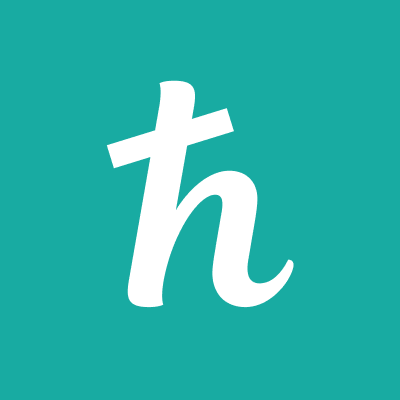Blum Drawer Inserts Prices: Crypto and Blockchain Insights

Concept Introduction
As the boundaries between traditional finance and digital assets blur, certain phrases from the physical world begin to echo in the halls of blockchain technology. One such instance is 'Blum drawer inserts prices.' While at first glance, it appears to reference a hardware product, this phrase invites a deeper dive when examined through the lens of the crypto, blockchain, and broader financial sectors. In finance, 'drawer inserts' can metaphorically represent modular tools, pricing models, or distinct services that can be combined for bespoke asset management or decentralized finance operations.
Understanding how modular components—whether in furniture or finance—affect price structures and user experiences has become an essential skill in digital asset management. Analogous to how a drawer insert upgrades the utility of cabinetry, modular blockchain solutions and dynamic financial instruments have transformed investment landscapes. Let's unpack the origins and evolving role of such modularity in the rapidly shifting world of crypto and blockchain.
Historical Background or Origin
The concept of modularity and tailored pricing is not new. In traditional markets, brands like Blum revolutionized cabinet hardware with high-quality inserts, which set distinct pricing tiers based on utility, build quality, and customization. This principle has influenced modern financial systems, especially with the arrival of blockchain and smart contracts.
Blockchain ecosystems often borrow from the idea of modular, plug-and-play components—whether that's composable DeFi protocols, custom wallets, or innovative exchange features. Just as cabinetry professionals consider the cost-benefit of drawer inserts, crypto traders and builders assess the value of integrating new financial tools, considering their price and utility.
In the early days of blockchain (think pre-2015), most platforms operated as monoliths, offering limited flexibility. Today, the rise of DeFi, Layer-2 solutions, and intricate wallet designs mirrors the modular explosion seen in the hardware world. Projects now offer 'insertable' contracts or features that users can overlay, each with its own pricing model. This evolution has made digital asset management more accessible and adaptable, much like buying and customizing physical drawer inserts.
Working Mechanism
So how do 'Blum drawer inserts prices' translate to the blockchain and crypto world? Imagine drawer inserts as modular smart contract components—each priced individually, allowing users to assemble customized portfolios or DeFi strategies.
Modular Smart Contracts
Smart contract platforms enable users to select, combine, and pay for only the functions they desire. For example, a decentralized finance protocol might offer modules for lending, liquidity provision, staking, or insurance—each with its independent fee structure. This à la carte pricing model echoes how customers select drawer inserts based on specific storage needs and price points.
Tokenized Asset Pricing
In decentralized markets, assets and features are often tokenized. The price of a new feature (or a 'drawer insert') may fluctuate based on network demand, supply, or auction mechanisms. Governance tokens allow communities to vote on the value of certain modules or even subsidize their use, creating dynamic and community-driven pricing structures.
Portfolio Customization and Wallet Tools
Modern wallets, such as Bitget Wallet, now offer extensive customization. Users can opt into advanced analytics, NFT management, or DeFi portfolio tracking. Each 'feature insert' typically comes with a transparent pricing mechanism—sometimes free, sometimes premium tiered—mirroring the nuanced decision-making of choosing among various physical inserts.
Example Scenario
Suppose you're building a diversified digital asset portfolio. You might:
- Add a liquidity pool tracking module (insert)
- Opt for a social trading analytics dashboard (insert)
- Subscribe to real-time risk alerts (insert) Each of these components carries its own pricing, and your wallet shows a composite charge—just as an invoice for custom drawer inserts would.
Benefits or Advantages
Flexibility and Customization
The main advantage of modularity—be it in physical hardware or DeFi—is tailored user experiences. Crypto investors can choose and pay for only the features they need, controlling both cost and complexity.
Greater Accessibility
By breaking down comprehensive services into modular offerings, blockchain projects lower the barrier to entry. Newcomers can start small, purchasing individual features, and scale up as they gain confidence—akin to owning a base drawer and adding inserts over time.
Transparent and Dynamic Pricing
Blockchain technology enables real-time price discovery and transparency. Users can compare the utility and cost of various modules, much like comparing drawer insert models and prices from a catalog.
Decentralized Governance and Community Input
Unlike conventional hardware, blockchain modular pricing is often decentralized. Tokenholders may influence or vote on the cost and development priority of new modules, merging economic incentives with user demand.
Rapid Innovation
Competition among module providers encourages faster innovation. Developers are incentivized to create the best possible product—inserts (modules) that serve evolving user needs at competitive prices.
Conclusion or Future Outlook
The convergence of ideas like 'Blum drawer inserts prices' with blockchain modularity is more than a clever metaphor—it signals the future of user-centric innovation in the digital asset space. As crypto markets mature, expect to see even more customizable, pick-and-pay toolsets, be it in exchanges, wallets, or financial services.
For those looking to manage digital assets efficiently, platforms like Bitget Exchange offer a wide assortment of trading and analytical features, much like an upgraded toolkit of modular inserts. Similarly, Bitget Wallet allows users to tailor their experience with diverse plugins and modules, echoing the flexibility and price transparency seen in top-tier hardware bundles.
The next evolution will undoubtedly bring enhanced interoperability, unified billing, and deeper personalization—creating a seamless journey for both new and seasoned crypto enthusiasts. Just as a well-organized drawer transforms daily routines, the modular future of DeFi and digital assets promises convenience, cost efficiency, and empowerment for all participants. Ready to assemble your perfect digital portfolio? The options—and inserts—are there for the taking.



















